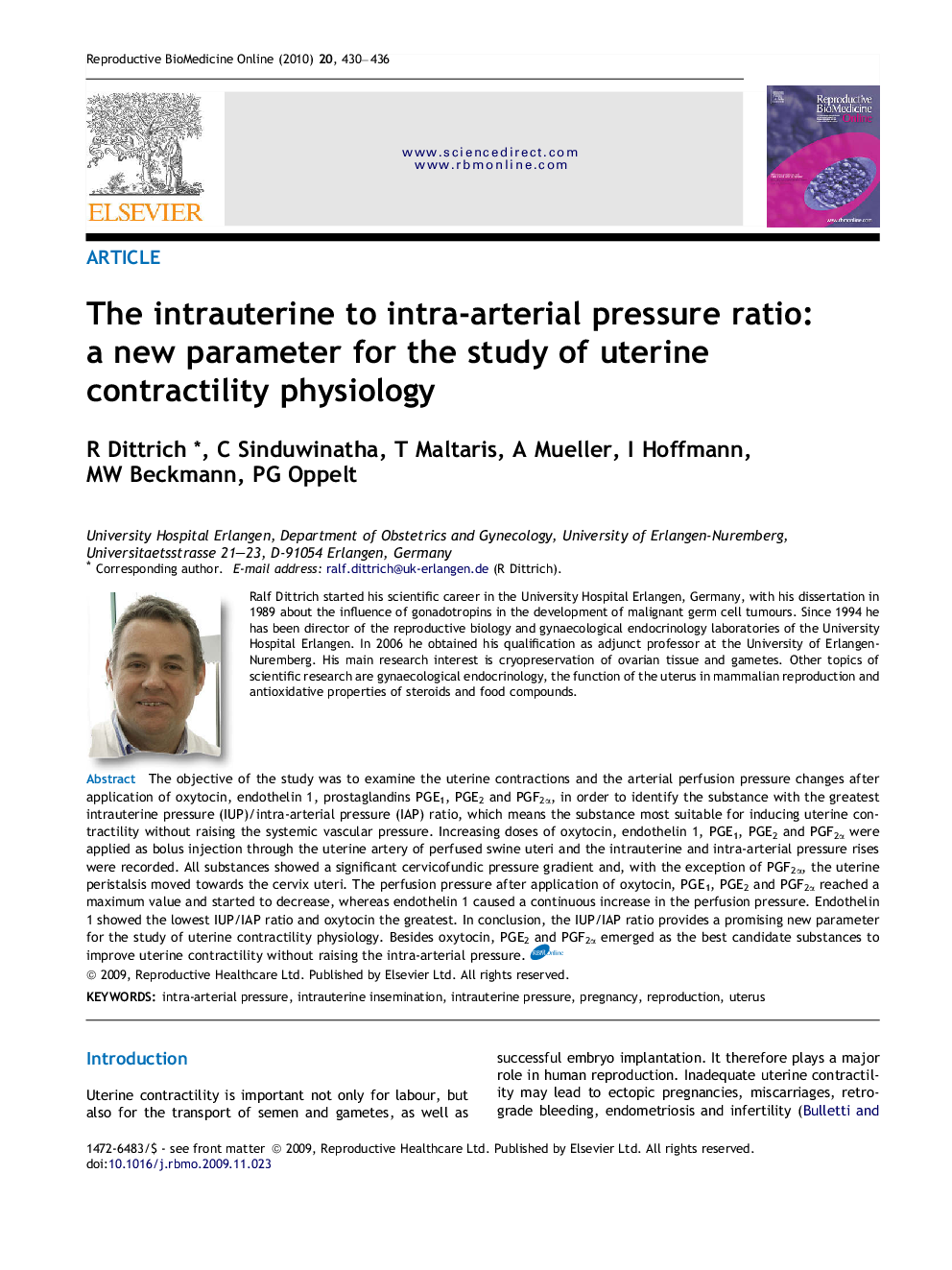| Article ID | Journal | Published Year | Pages | File Type |
|---|---|---|---|---|
| 3971549 | Reproductive BioMedicine Online | 2010 | 7 Pages |
Abstract
The objective of the study was to examine the uterine contractions and the arterial perfusion pressure changes after application of oxytocin, endothelin 1, prostaglandins PGE1, PGE2 and PGF2α, in order to identify the substance with the greatest intrauterine pressure (IUP)/intra-arterial pressure (IAP) ratio, which means the substance most suitable for inducing uterine contractility without raising the systemic vascular pressure. Increasing doses of oxytocin, endothelin 1, PGE1, PGE2 and PGF2α were applied as bolus injection through the uterine artery of perfused swine uteri and the intrauterine and intra-arterial pressure rises were recorded. All substances showed a significant cervicofundic pressure gradient and, with the exception of PGF2α, the uterine peristalsis moved towards the cervix uteri. The perfusion pressure after application of oxytocin, PGE1, PGE2 and PGF2α reached a maximum value and started to decrease, whereas endothelin 1 caused a continuous increase in the perfusion pressure. Endothelin 1 showed the lowest IUP/IAP ratio and oxytocin the greatest. In conclusion, the IUP/IAP ratio provides a promising new parameter for the study of uterine contractility physiology. Besides oxytocin, PGE2 and PGF2α emerged as the best candidate substances to improve uterine contractility without raising the intra-arterial pressure.
Keywords
Related Topics
Health Sciences
Medicine and Dentistry
Obstetrics, Gynecology and Women's Health
Authors
R. Dittrich, C. Sinduwinatha, T. Maltaris, A. Mueller, I. Hoffmann, M.W. Beckmann, P.G. Oppelt,
